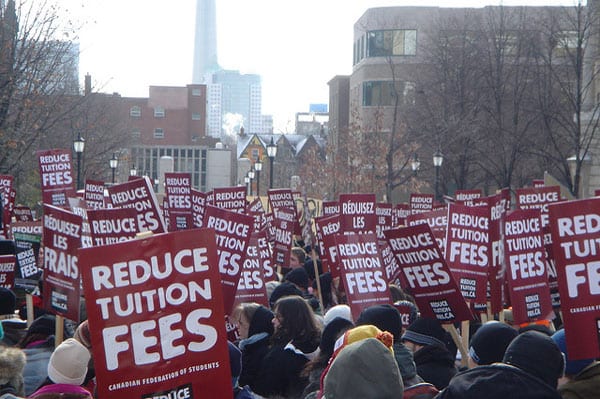
October 17, 2018; Inside Higher Ed
The College Board’s annual report, “Trends in College Pricing 2018,” reveals that pricing and fees for colleges and universities were about the same as they were last year but suggests that the availability of aid for low-income students remains a looming concern on the horizon.
The study, a comprehensive look at tuition and student fees at institutions of higher education with adjustments for institution type and location, has become a useful indicator of the affordability of higher education institutions in the US over the past 28 years. This most recent report found that the average price for a year at two- and four-year public colleges dropped slightly: 0.3 percent from $3,670 to $3,660 and 0.4 percent from $10,270 to $10,230, respectively. The average price of private four-year colleges rose 0.3 percent from $35,720 to $35,830.
Sandy Baum, a senior fellow at the Urban Institute and an author of the report, confirmed to Inside Higher Ed that college prices have “moderated” since the recession, but indicated that “over the long run, prices are still going up a lot.” She added, “And you can’t look at those prices without looking at what’s happened to student aid.”
Sign up for our free newsletters
Subscribe to NPQ's newsletters to have our top stories delivered directly to your inbox.
By signing up, you agree to our privacy policy and terms of use, and to receive messages from NPQ and our partners.
The College Board’s related study, “Trends in Student Aid 2018,” which draws on data a year behind “Trends in College Pricing,” reveals that total aid for undergraduates rose 1.2 percent between from $14,620 to $14,790 and that the average federal loan dropped 3.6 percent from $4,680 to $4,510. The study provides an in-depth look at student loan repayment patterns and indicates that 17 percent of all borrowers are in default on their loans. Regarding default rates, the study emphasizes that “the problem is particularly severe for those who attended for-profit institutions and for independent students.” According to the study, undergraduates received an average of $14,790 (per full-time equivalent student) in financial aid; $8,970 in grants; $4,510 in federal loans; $1,240 in education tax credits and deductions and $70 in federal work study.
Again, providing a cautionary note, Baum told Inside Higher Ed that tuition prices and student aid are cyclical and so could shift again. She emphasized that although state funding for higher education “is rising in many places,” there remains a need for state lawmakers “to more closely consider the relationship between funding and student need.” She added that “more than half of the aid dollars that public four-year colleges distribute is not need-based.” In contrast, she explained that at many elite private institutions, aid packages for low-income students have become “very progressive.” Unfortunately, she explained, other private institutions “just don’t have the money to make it that cheap” for low-income students.
Chiming in on this important issue from their perspective as current students in a recent piece in The Nation, two organizers with the advocacy group Student Debt Crisis call for more attention to the specific challenges for women— particularly women of color—that come with the $890 billion in student-loan debt that women hold. They draw attention to a recent AAUW study that shows that women are not only more likely to take on debt to pay for college, but that they pay it back at a slower rate than men. Sabrina Cereceres, one of the two authors and a current student at Pima Community College, asserts in closing, “Someday, I will be on the front lines ensuring economic justice for women, and voting to end the student-debt crisis is how I choose to start my journey.”—Anne Eigeman











